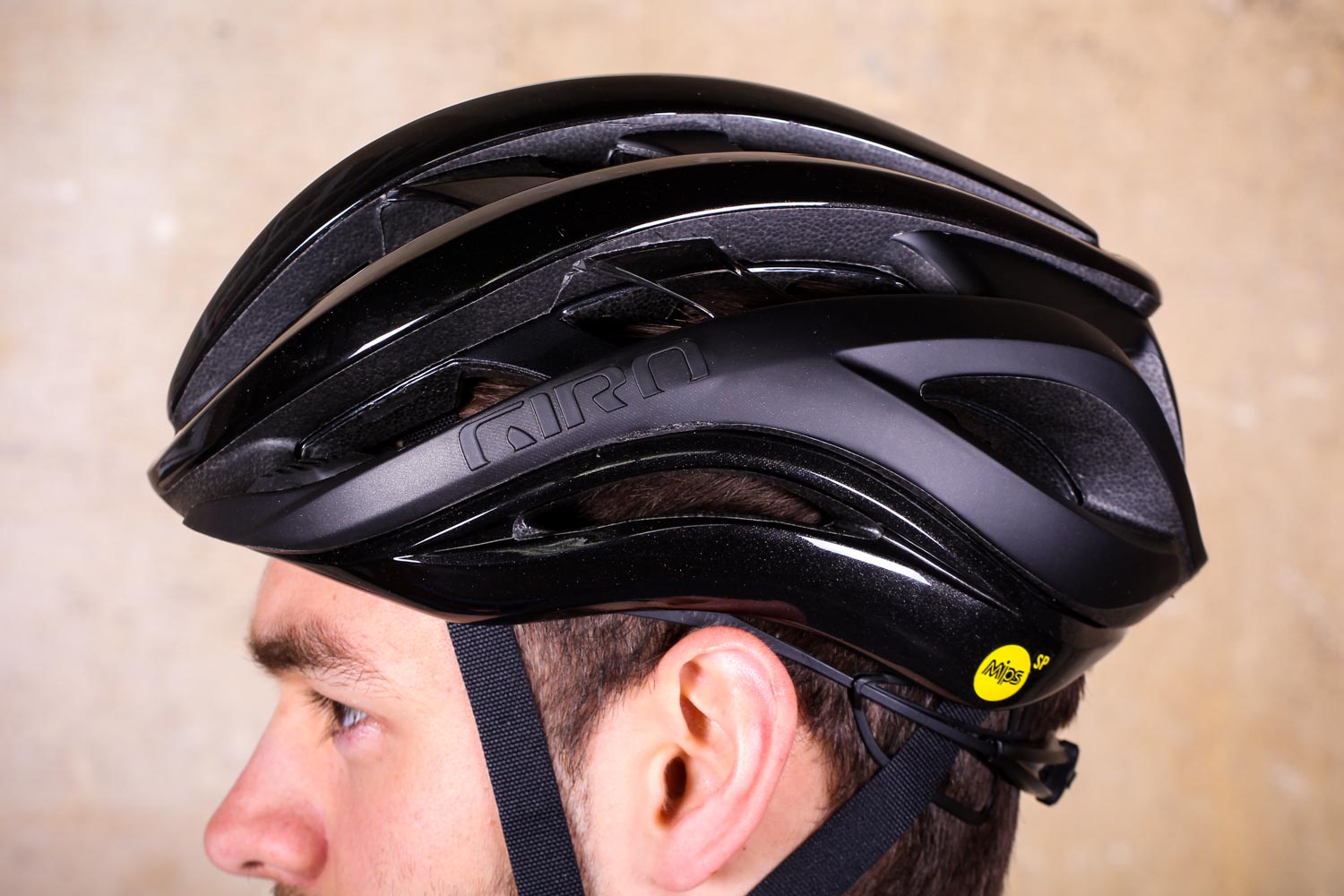

Our size medium weighed in at 270 grams, pretty light although not the lightest option on the market. It’s slightly harder to adjust or tighten than other helmet straps we have tried, but that’s a minor detail because adjustment should really only need to be done once. For added comfort around the chin, the strap is quite soft. The Ionic+ antimicrobial padding seems comfortable and effective so far-there is no smell coming from the helmet after a few weeks spent riding it exclusively and doing nothing to clean it. And the helmet cradle is easy to raise and lower as well. The rubberized dial on the back of the helmet is small, but easy to operate on the bike, offering micro adjustments with a satisfying, audible click. We experienced no pinch points or pressure as we adjusted the excellent-as-usual Roc Loc 5 Air fit system. The result is a helmet as breezy as its 15 Wind Tunnel vents would suggest-you’ll probably want to wear a cap under this lid during cold weather rides. The interior of the helmet can be channeled more aggressively with Giro’s Wind Tunnel channeling than helmets with traditional MIPS liners, enhancing airflow and cooling. But beyond safety, the important part of Spherical tech is the new design opportunities it presents. You’ll have some fun playing around with moving around the dual foam layers, experiencing the ball and socket design at work. It still reads mostly as a black helmet, but the green adds some interest to the helmet. The “matte warm black” color we tested features a forest green color on the inside layer, with matte black on the top layer. But the Spherical design adds another layer of safety, allowing different densities in the separate foam liners-one to account for high speed impacts, and the other for low speed ones-creating a well-rounded helmet ready for however you ride.īefore moving on, we have to take a quick moment to appreciate the paint jobs on the Helios, which use different colors on the different layers of foam, providing more depth to each colorway. The liners can move independently, in a “ball-and-socket” design similar to how your hips work, allowing the helmet to mitigate rotational forces in a crash. This technology integrates the MIPS liner and accompanying elastomeric anchors within the helmet, placing them between two Nanobead EPS foam liners. Spherical technology is at the core of what makes this helmet great, so it’s helpful to understand a bit more about it. Luckily the tech has come to a less expensive, albeit still pricey, helmet, one that proves once again why Giro is at the top of the helmet game: the Helios Spherical. Called Spherical Technology, it debuted in the Aether Spherical at a price point of upwards of $320. Ever the innovator, Giro found a way to improve MIPS technology by embedding it inside the helmet between two layers of EPS foam. The downsides by no means outweigh the improvements in safety, but there has always been a part of us that knows these helmets could be better. The plastic liners have been known to snag hair as well. They can be less comfortable and don’t ventilate quite as well compared to their non-MIPS counterparts. But there have been some drawbacks to traditional MIPS helmets, which use a plastic liner inside the helmet. MIPS has been a transformative technology for bike helmets, taking safety to a new level by protecting against the rotational motion of impacts. Heading out the door? Read this article on the new Outside+ app available now on iOS devices for members!


 0 kommentar(er)
0 kommentar(er)
